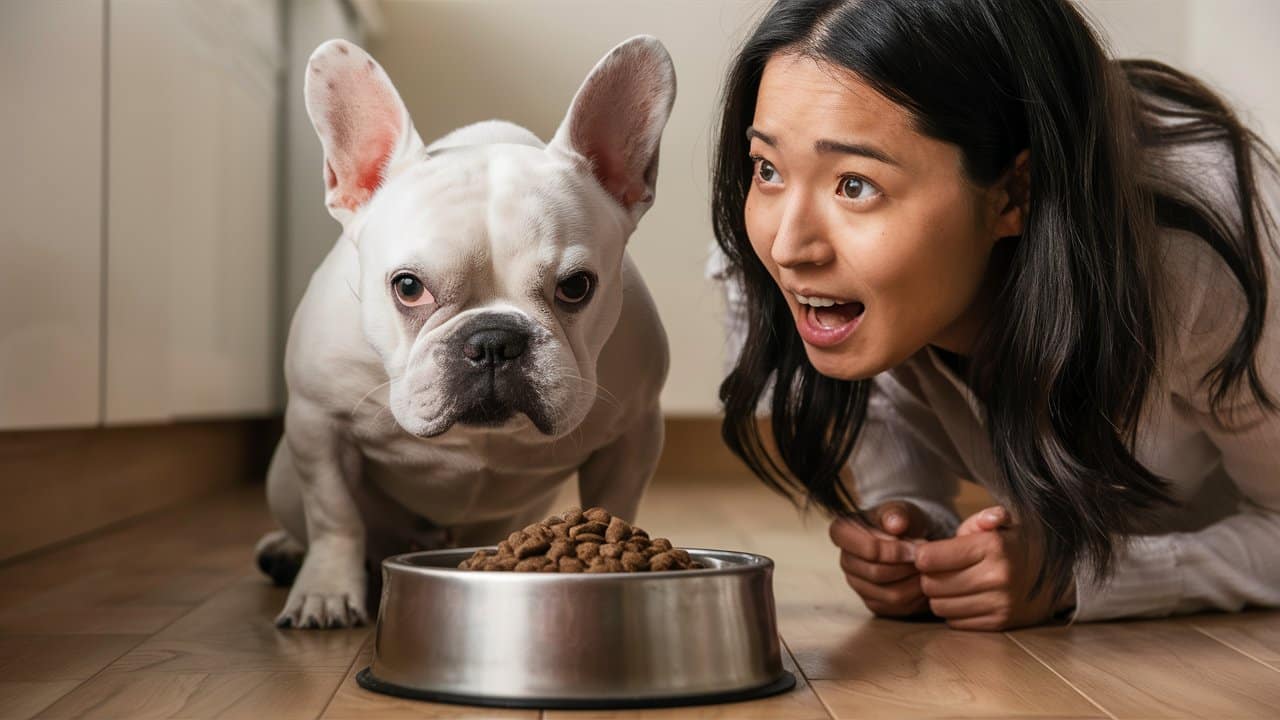Good Dog Food for Allergies
I’m so glad you’re here because I know how frustrating it can be to deal with our furry friends’ allergies. I mean, who doesn’t want to see their pup happy and healthy, right? But sometimes, finding the right food can be a real challenge.
As a dog owner, you want to make sure you’re providing the best possible nutrition for your pet. And when allergies come into play, it can get really complicated. You might find yourself scrolling through endless lists of ingredients, trying to figure out what’s causing the problem.
Or you might be tempted to switch foods every few weeks, hoping to stumble upon the magic solution. But let’s be real, that’s not only stressful for you, but also for your poor pup.
Take a look at our vrecommended dog food for allergies here….
Now, I’m not a vet, but I’ve learned that the key to finding good dog food for allergies lies in understanding what your dog’s specific needs are. You see, every dog is different, and what works for one might not work for another. So, it’s essential to identify the root cause of the allergy and then find a food that addresses those specific needs.

For instance, some dogs might have a sensitivity to certain proteins like beef or chicken, while others might react to grains like wheat or corn. And then there are those annoying environmental allergens like pollen or dust mites that can wreak havoc on your dog’s skin and coat. The good news is that there are plenty of amazing dog food options out there that cater to these specific needs.
When searching for good dog food for allergies, look for formulas that are labeled as “hypoallergenic” or “limited ingredient diets.” These foods typically use novel protein sources like venison or salmon, and unique carbohydrates like sweet potatoes or green peas. Some might even include added supplements like omega-3 fatty acids or antioxidants to help soothe and calm your dog’s skin.
Another crucial factor to consider is the manufacturing process. You want to choose a food that’s made with high-quality ingredients and minimal processing to ensure that the nutrients remain intact. Some brands even offer customized diets based on your dog’s specific needs and health conditions.
Now, I know what you’re thinking: “This all sounds great, but how do I know what’s best for my dog?” Don’t worry, I’ve got you covered! In this post, we’ll explore some of the top tips and tricks for finding good dog food for allergies. We’ll discuss the importance of reading labels carefully, and even making some simple changes to your dog’s environment.
So, if you’re ready to take the first step towards helping your furry friend feel their best, keep reading!
Key Takeaways:
- Good dog food for allergies should be hypoallergenic, meaning it’s formulated with limited ingredients and either novel proteins or hydrolyzed proteins to reduce the risk of an allergic reaction.
- When choosing a food, it’s crucial to scrutinize the label, avoiding common allergens like beef, chicken, dairy, wheat, soy, and corn, and ensuring the protein source is new to your dog.
- A gradual transition to the new food, combined with close monitoring of symptoms and consultation with your vet if needed, can help your dog find relief from allergies and live a more comfortable life.
Just like humans and cats, dogs can develop allergies to the ingredients in their food. A food allergy is when a dog’s immune system reacts inappropriately to one or more of the ingredients in their diet, causing skin and/or tummy issues.
Dogs can develop allergies to any ingredients they have eaten before. They tend to be allergic to proteins (meat or dairy) — most commonly to ingredients used regularly in dog food such as beef, chicken, or lamb. Another ingredient dogs can be allergic to is wheat. Allergies in dogs can occur at any age but most commonly start when they are less than a year old.
https://www.pdsa.org.uk
What Are Food Allergies in Dogs?
Ah, the joys of dog ownership! But, let’s face it, dealing with food allergies can be a real challenge. As I’ve learned, food allergies occur when your dog’s immune system goes into overdrive, reacting to certain ingredients in their food. This reaction triggers a range of unpleasant symptoms, leaving your poor pup feeling miserable.
Common Symptoms
What are the telltale signs of a food allergy? Well, if your dog is constantly scratching, has hot spots, or is experiencing digestive issues like vomiting or diarrhea, it could be a food allergy. These symptoms can be a real nuisance, but don’t worry, we’re about to probe the world of hypoallergenic dog food!
Causes and Triggers
Common culprits behind food allergies include beef, chicken, dairy, wheat, soy, and corn. These ingredients can spark an allergic reaction, leaving your dog feeling uncomfortable and you feeling frustrated.
With food allergies, it’s imperative to identify the root cause. By understanding what triggers the reaction, you can make informed choices about your dog’s diet.
Diagnosing Food Allergies
It’s vital to identify the root cause of your dog’s discomfort, and that starts with diagnosing food allergies.
When to Visit the Vet
To determine if your dog has a food allergy, you need to rule out other potential causes of their symptoms. If you’ve noticed persistent itching, ear infections, or digestive issues, it’s time to schedule a vet visit.
Ruling Out Other Conditions
One of the most critical steps in diagnosing food allergies is to eliminate other possible causes of your dog’s symptoms.
This process involves a thorough examination, medical history review, and potentially some diagnostic tests to identify underlying conditions that could be contributing to your dog’s discomfort.
For instance, skin infections, flea allergies, or environmental allergies might be masquerading as food allergies. By ruling out these conditions, you and your vet can focus on identifying the true culprit behind your dog’s symptoms.

Hypoallergenic Dog Food Explained
To understand what makes a dog food hypoallergenic, let’s break it down. Hypoallergenic dog foods are specifically designed to minimize the risk of an allergic reaction in your furry friend.
Limited Ingredients and Novel Proteins
One of the key characteristics of hypoallergenic dog food is the use of limited ingredients. This means that the food contains fewer ingredients, reducing the likelihood of an allergic reaction. Novel proteins like duck, venison, or rabbit are also used, which are less common allergens than traditional proteins like beef or chicken.
Hydrolyzed Proteins and Avoiding Common Allergens
For dogs with severe allergies, hydrolyzed proteins may be the way to go. Food manufacturers also avoid common allergens like beef, dairy, wheat, soy, and corn, which are often the culprits behind food allergies.
Food manufacturers use hydrolyzed proteins to create a unique protein source that’s less likely to trigger an allergic reaction. This process involves breaking down the protein into smaller peptides and amino acids, making it unrecognizable to the immune system. By doing so, the risk of an allergic reaction is significantly reduced, providing relief to dogs with severe allergies.
Choosing the Right Food for Your Dog
Many dog owners struggle to find the perfect food for their furry friends, especially when allergies are involved. It’s a daunting task, but don’t worry, I’m here to guide you through it.
Reading Labels and Transitioning Gradually
Around now, you’re wondering what to look for in a good dog food for allergies. An excellent place to start is by scrutinizing the label. Opt for limited ingredients, avoid common allergens, and ensure the protein source is novel or hydrolyzed. When transitioning to the new food, do it gradually, mixing it with their old food over a few days to prevent digestive upset.
Monitoring Symptoms and Additional Strategies
For many dogs, a hypoallergenic diet is just the beginning. Monitoring your dog’s symptoms closely is crucial to identifying what works and what doesn’t. Keep an eye out for improvements or setbacks and be prepared to adjust their diet or add additional strategies like medications, supplements, or special baths as needed.
Additional support can make all the difference in your dog’s comfort level. Consider consulting with your vet about medications or supplements that can help alleviate symptoms
. You might also explore special shampoos or conditioners designed to soothe itchy skin. By combining these approaches, you can provide your dog with comprehensive relief from allergies.
Summing up
As a reminder, finding good dog food for allergies is all about understanding what triggers those reactions in your furry friend. By knowing the common culprits, switching to a hypoallergenic food, and transitioning gradually, you can bring relief to your dog’s itchy skin and upset tummy.
Don’t be afraid to explore different alternatives, and if needed, consult your vet for personalized advice. With patience and the right food, you can help your dog live a happier, healthier life – and that’s what it’s all about!
People also ask….
What are the common signs of food allergies in dogs?
If your dog is constantly scratching, has hot spots, vomiting, or diarrhea, it could be a sign of a food allergy. Other symptoms include ear infections, skin rashes, and digestive issues. Keep an eye out for these signs, and if you suspect an allergy, consult your vet to rule out other medical conditions.
How do I choose the right good dog food for allergies?
When choosing a hypoallergenic dog food, look for limited ingredients, avoiding common allergens like beef, chicken, dairy, wheat, soy, and corn. Opt for novel proteins like duck, venison, or rabbit, or hydrolyzed proteins that are broken down into smaller pieces. Be sure to transition your dog to the new food gradually, mixing it with their old food over a few days, and monitor their symptoms closely.
Are there any alternative strategies to help my dog with food allergies?
Yes, there are! In addition to switching to a hypoallergenic dog food, you can explore medications, supplements, or special baths to help alleviate symptoms. You can also consider working with a veterinarian or a canine nutritionist to create a customized diet for your dog.


